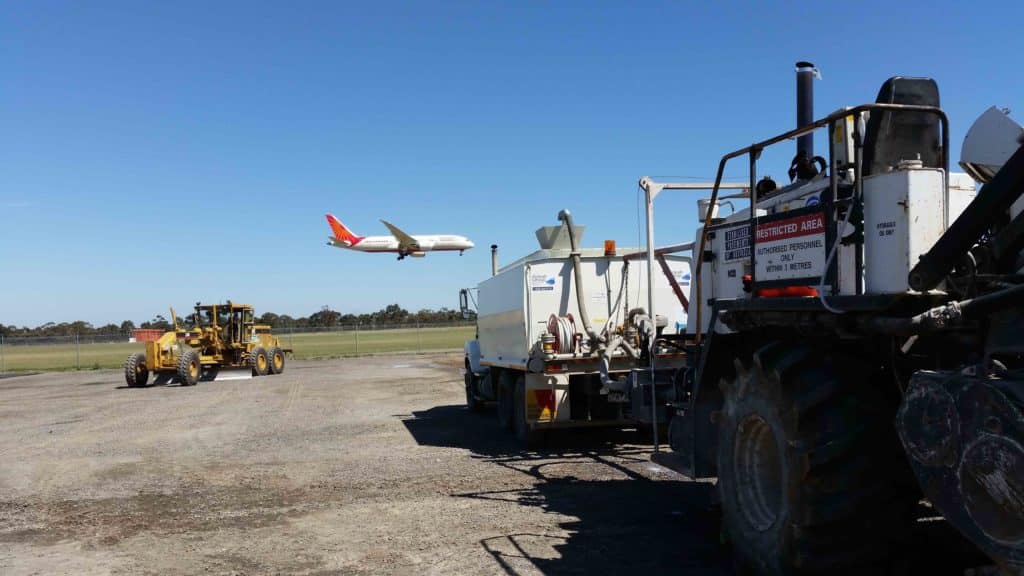
| Location | Melbourne, Victoria, Australia |
| Service | Dust Suppression and Surface Stabilisation |
| Products | GRT7000 & GRT9000 |
| Duration | September 2014 – November 2014 |
| Status | Completed |
As part of Melbourne Airport’s Master Plan to upgrade airfield facilities, new aircraft movement areas and improved road and transport networks, two crucial dust suppression and soil stabilization projects were developed. For the redevelopment of Melbourne airport, the runway perimeter road would welcome an increase of heavy vehicles. The increase of vehicle traffic would create dust and soil stabilization problems, which would inherently affect the runway perimeter road in the longer-term.
With the introduction of new plans for upgrade, an airport carpark that was susceptible to dust problems and structural damage from changing weather was also enforced for modification as it would become a key carpark for all operational vehicles in the future. These two projects were planned meticulously to not only ensure regulations and standards were met, but to also ensure potential health, safety, and environmental risks were realized, managed, and mitigated.
As the runway perimeter road introduces an increase number of heavy vehicles part of the Melbourne airport master plan, severe dust problems were also introduced. These dust problems would be generated in much greater volumes due to the increase number of vehicles (moderate and heavy), affecting all workers that travel and utilize the perimeter road.
In addition, this perimeter road became susceptible to potential failing road pavements as it was not constructed with the intention of high heavy traffic volume usage. Failing pavements also pose a safety threat and financial risk. With no road compaction or sealing, rain events coupled with additional increased traffic would indefinitely change the structural integrity of the road (i.e. road corrugation and pot holes), making it unsafe for workers to use.
Similarly to the runway perimeter road, the car park in question had dust problems that would eventually pose safety risks to the people that utilized it. Furthermore, as the carpark was designed with a hard sand as its base, no stabilisation for the car park was formed. As a consequence, corrugation and other surface degradation was easily formed by heavy traffic and weather changes. This meant that the carpark was susceptible to not being used during and/ or after a rain event.
The GRT team provided a road and area assessment on the runway perimeter road and carpark to determine the most suitable product/s considering both the environmental and economic impact this product may potentially produce. GRT7000, a concept unique to GRT, was the recommended product for the runway perimeter road and the carpark as it:
GRT7000 is a clear drying polymer emulsion sprayed on or worked into the surface of a pavement to provide a tough, waterproof, and dust free pavement surface.
GRT9000, GRT’s most advanced polymer soil stabilizer, was one of the recommend product for the carpark as it:
GRT9000 is a cost-effective clear polymer that creates hard, semi-flexible, and water impermeable pavement.
The GRT7000 treated runway perimeter road and carpark delivered high performing results that were expected from the product:
The GRT9000 treated carpark also improved its compressive strengths, water impermeability and was aesthetically pleasing as the stabilisation maintains the natural look of the in-situ material. With this project, the benefits and results gained were clear:
These products have been utilised globally by GRT for similar civil applications and other applications such as military, industrial, private, tourism and mining sectors.
Are environmental regulations, health and safety concerns or potential profit loss a concern right now?
Contact Us Now